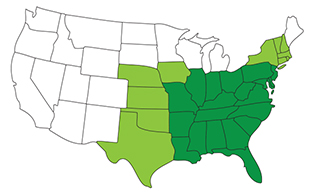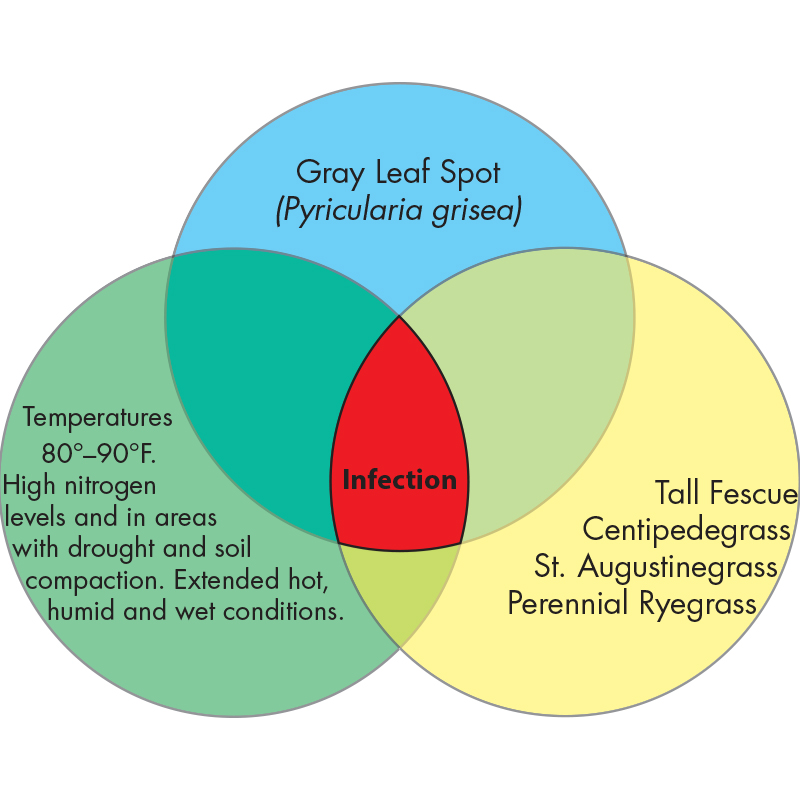
Gray Leaf Spot
Pyricularia grisea
Gray Leaf Spot is a lawn disease that can quickly turn destructive. It occurs in most areas of the eastern United States where Perennial Ryegrass is grown, often developing in areas prone to drought. Gray Leaf Spot affects northern climates from late summer through the fall and southern climates primarily in the summer.
Identify

Foliar
Signs of Gray Leaf Spot in your lawn can vary significantly depending on the type of grass you have. Typically, the first symptoms of Gray Leaf Spot are small, brown spots on grass leaves and stems. These spots grow quickly, becoming oval-shaped and bluish-gray. As they age, the lesions develop a depression in the center and become tan to gray in color. The irregularly shaped margins range from purple to brown. Damage from this lawn disease quickly turns from small, unremarkable leaf spots to completely dead areas of grass.
Life Cycle
A Gray Leaf Spot infection can occur only if all of the following conditions are present: 1. Pathogen: Pyricularia grisealawn fungus 2. Host: Centipedegrass, Perennial Ryegrass, St. Augustinegrass or Tall Fescue 3. Environment: Hot, humid climates with temperatures ranging from 80°-90°F and compact soils with high nitrogen levels

Control
Because you can't change your environment, the best way to control Gray Leaf Spot is to create conditions that will foster a healthy lawn. Not only will this make your yard unfavorable for Gray Leaf Spot growth, but it will also lower your risk of extensive damage should the lawn disease develop—plus you'll have the type of lawn you'll want to live on. For Gray Leaf Spot control and lawn fungus treatment, TruGreen® recommends the following cultural control tips: • Avoid fertilizers with excessive levels of nitrogen in the middle of summer • Water deeply one to three times a week rather than lightly every day • Reduce shade and increase air flow to reduce the amount of time the water is left on the leaf blades • Reduce thatch with core aeration or vertical cutting • Plant disease-resistant turfgrass varieties
Diagram








